The Scottish Premiership is always viewed as a two-horse race.
The two Glasgow giants, Rangers and Celtic, battle it out to see who will be crowned champions of Scotland.
Since Rangers last won the title in 2021, Celtic’s dominance under Ange Postecogolou and, subsequently, returning manager Brendan Rodgers has seen them break further and further away from the chasing pack.
Their arch-rivals, Rangers, have failed under three separate managers now to reclaim the title and appear to be struggling with the pressure of stopping Celtic from equaling their 55 League titles.
However, there is an unexpected challenger this season.
Aberdeen have won their first seven games, keeping pace with Celtic, who have also won all of their opening matches.
After a dismal season, finishing in the bottom half and the sale of star forward Bojan Miovski, many couldn’t have predicted this incredible start.
Under new manager Jimmy Thelin’s tactics, Aberdeen are challenging the Old Firm, but where is their success coming from?
One element of their tactics that’s given them a considerable degree of success is crossing.
More than half of their 15 goals in the league so far have come directly or indirectly from crosses.
Many teams can decide to put more balls into the box, but what are Aberdeen doing that’s giving them these incredible results?
This tactical analysis will consider four areas: their route to crossing positions, the areas in which they cross, the types of crosses they deliver, and their ability to convert these chances.
Getting To Crossing Positions
Under Jimmy Thelin’s coaching style, there are a couple of ways that Aberdeen can get into the prime position to deliver crosses.
The first and evidently most simple is utilising the 1v1 ability of their wingers and full-backs.
Aberdeen’s wingers will usually stand right on the touchline to give them as much space as possible.
Often, they will find themselves in 1v1 situations with the opposition’s full-backs, which gives them the opportunity to be direct and create space for a cross.
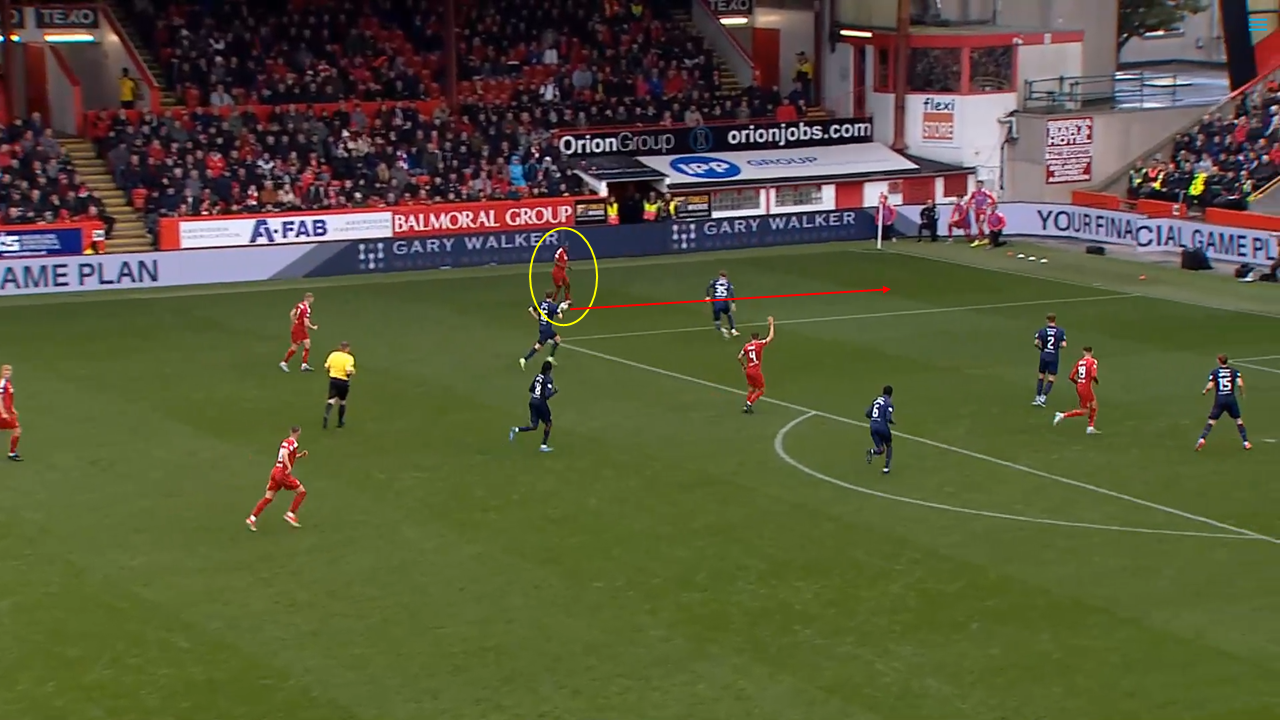
Here, Duk is in a one-on-one with the opposition’s right-back and easily goes past, allowing him to play a dangerous ball into the box.
Aberdeen have completed the fourth-most progressive runs in the Scottish Premiership this season, highlighting their ability to create space when dribbling with the ball.
This isn’t the only method that Aberdeen deploy to get into wide areas.
Often, they will use 2v1 situations to get into the best positions to cross the ball.
Aberdeen have completed the second most through balls in the Scottish Premiership this season, demonstrating their ability to find teammates in dangerous positions.
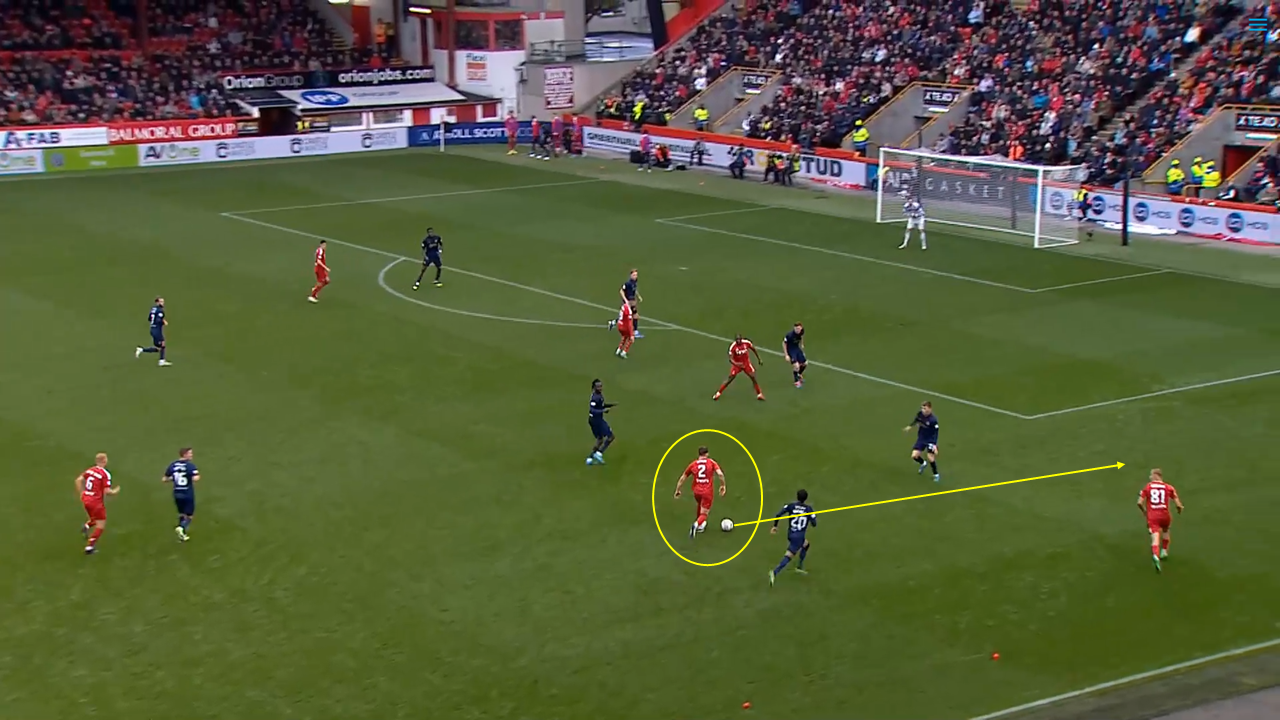
In this situation, Nicky Devlin is driving at the opposition’s left-back.
After Devlin has drawn in his opponent he plays a ball through to Finnish winger Topi Keskinen, who can dribble unchallenged into a prime area to cross the ball.
The desire to get into these areas is also critical.
Many people often talk about attackers needing the willingness to get into goalscoring positions.
However, it’s just as vitally important that players have the desire to get into positions to deliver balls into the box.
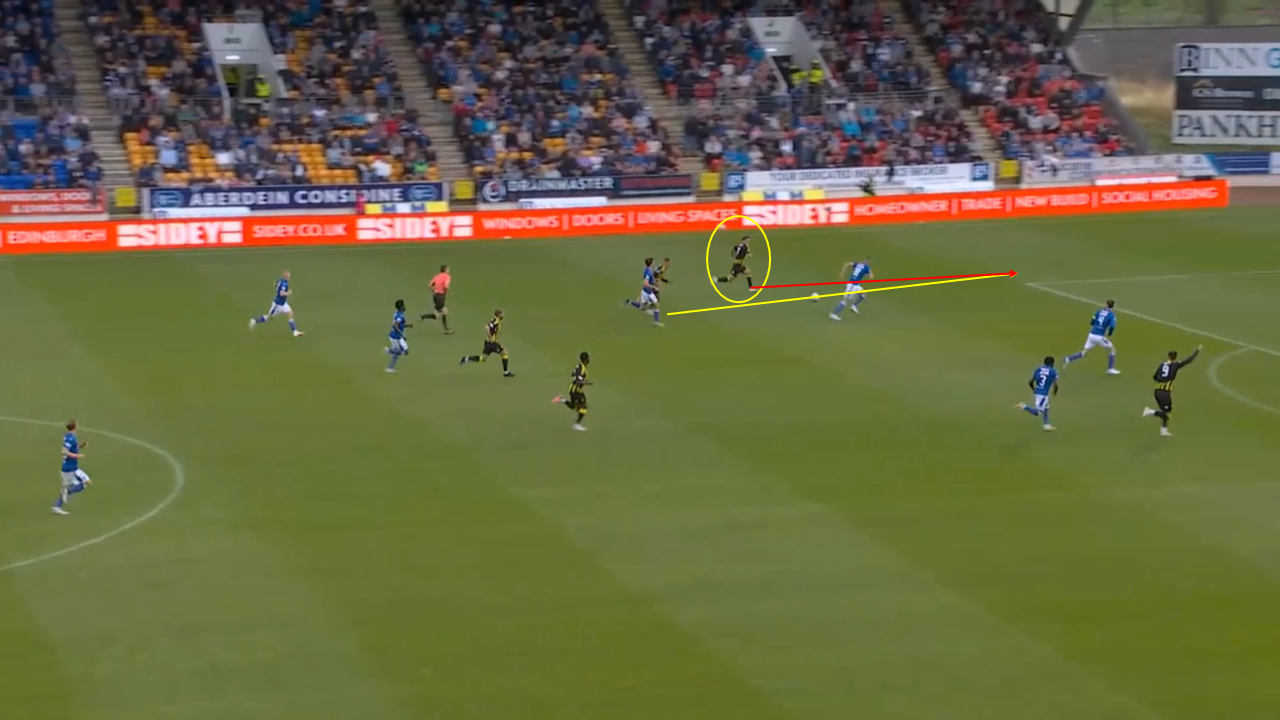
Here, McGrath starts behind the ball as his side breaks forward.
He works hard to make a supporting run beyond the player on the ball.
The ball is then passed to him, and the Irish winger cuts it back to Sokler, who fails to convert the chance.
Aberdeen Crossing Area
Under Jimmy Thelin’s style of play, much of Aberdeen’s success from crosses is due to them crossing the ball often from the most efficient area to cross from.
This zone is just inside the penalty area, and the majority of goals that come from crosses come from this area, with a conversion rate between 3.6% and 7.2%.
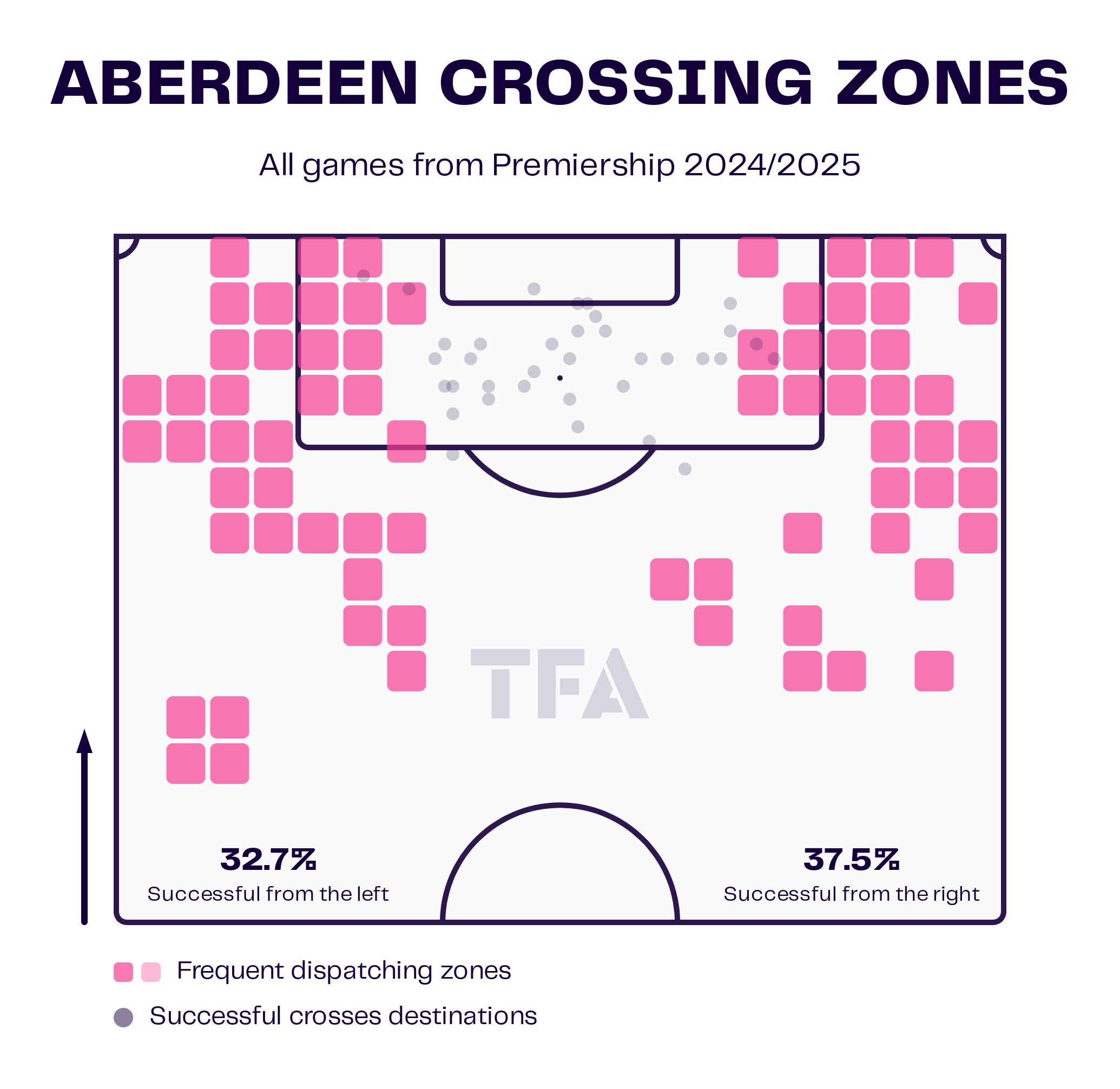
As seen from this visualisation, many of Aberdeen’s crosses have come from that area of the pitch.
Despite Aberdeen having the second-lowest number of crosses in the Scottish Premiership, it’s no coincidence that they’ve had such success from their deliveries into dangerous areas due to the position they’re crossing from.
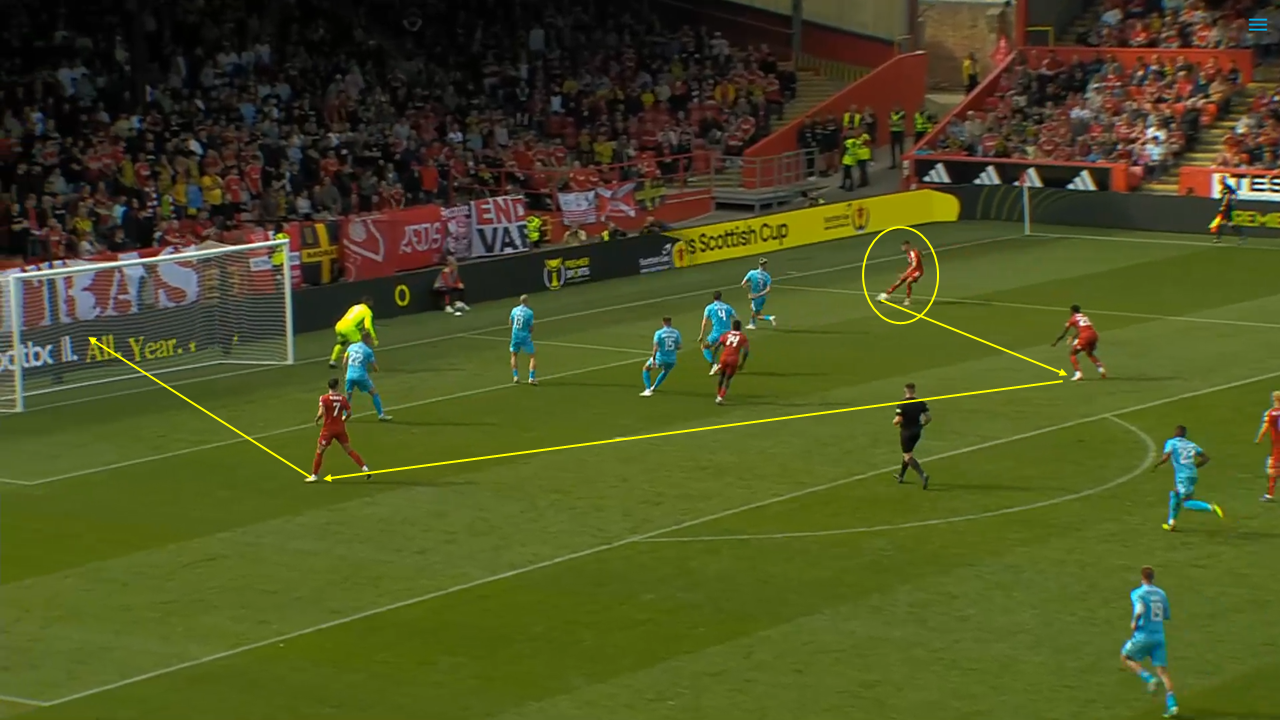
Here, we see a prime example of Aberdeen getting into the correct area to cross.
Having broken just into the penalty area on the right-hand side, the Dons deliver a simple but effective cross that allows Morris to get a shot on goal.
The ball takes a deflection and darts into the path of McGrath, who scores.
Types Of Delivery
The type of delivery is an essential component of a cross.
There’s a clear correlation between goals scored and the type of cross-delivered.
Aberdeen have utilised what’s been deemed to be the most effective type of cross — the cutback.
It’s been discovered across some tournaments that a ball played into the middle of the penalty area via a cutback has a 25% chance of conversion.
As we’ve already seen, Aberdeen’s ability to get into the prime position to cross, combined with their cutbacks, increases the chances of their crosses being effective far more.
Aberdeen Shot Assists Map
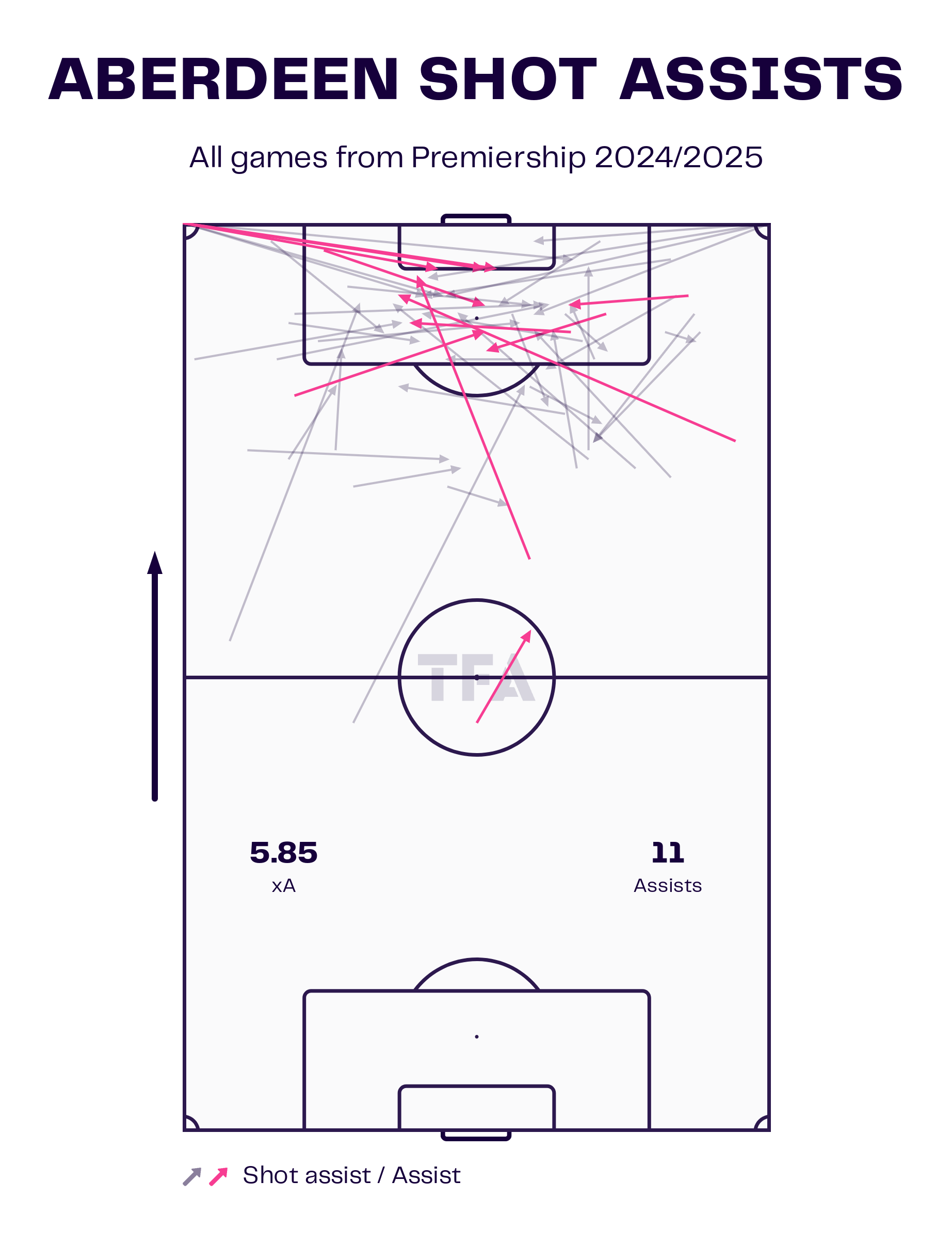
As this visualisation shows, a number of Aberdeen’s assists have come from cutbacks into the middle of the Penalty area.
In the Scottish Premiership, Aberdeen have the fourth-highest conversion rate, highlighting their ability to finish chances and create great chances.
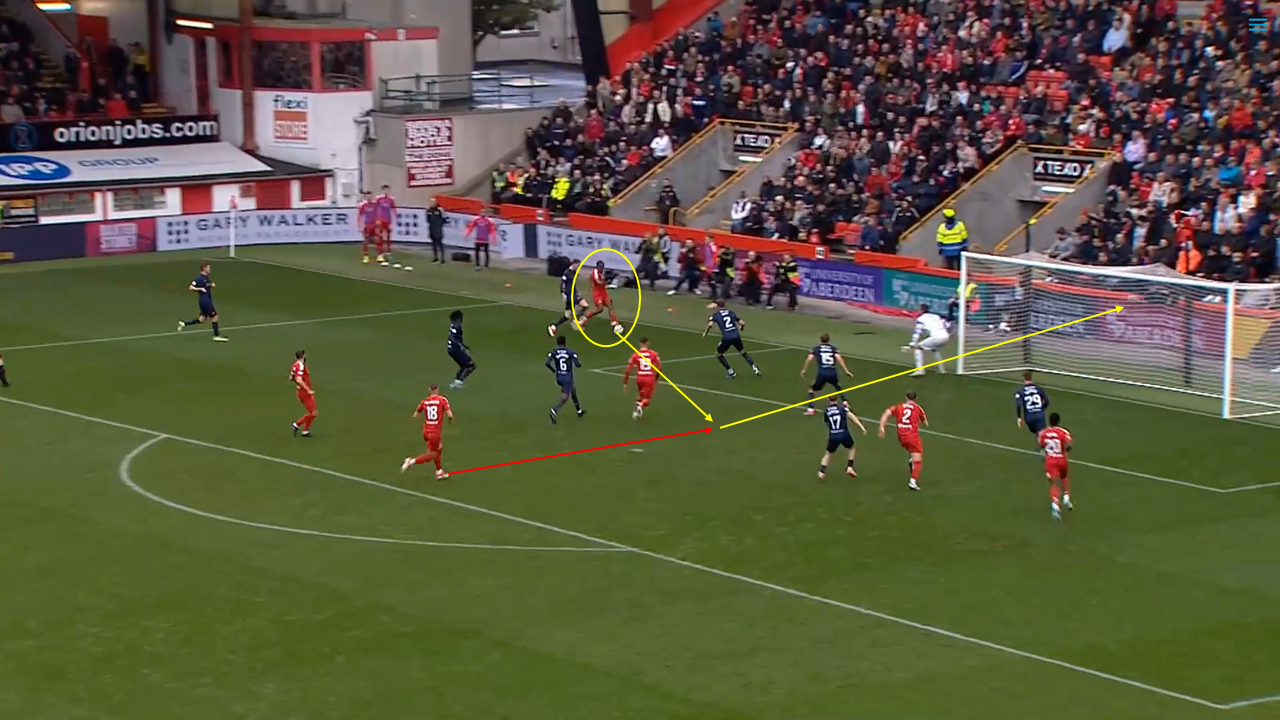
Here, we see a clear example of Aberdeen’s ability to score goals from cutbacks as Cape Verdean forward Duk has driven into the box.
Several players wait in the penalty area as the attacker cuts the ball back.
The ball falls directly into the path of Ante Palaversa, who fires it into the back of the net.
Converting Chances
Many people believe that an effective cross is purely about delivery.
However, a big feature of scoring from crosses is the number of players that get into the box to make the most of the delivery.
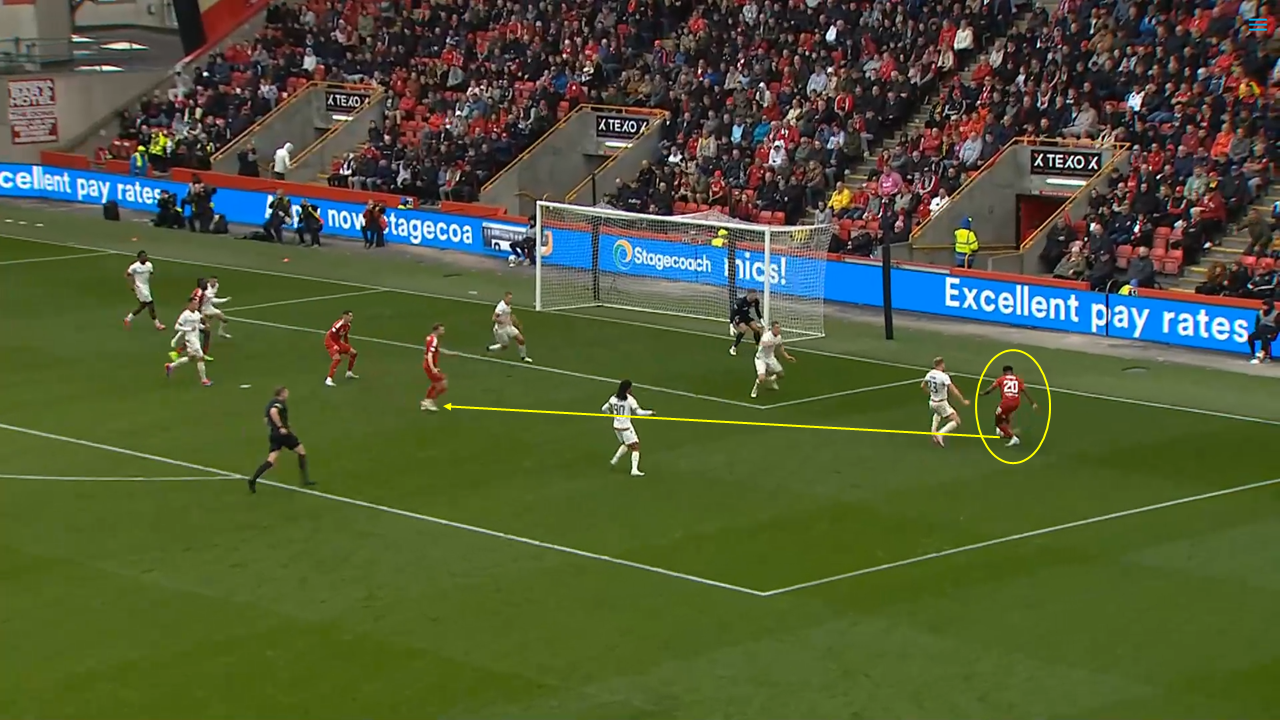
In this situation, Jayden Morris has driven into the box and looks to cut the ball back to his teammates.
In this situation, all three of his teammates are in the prime position to score a goal: the second six-yard box.
In the 2022-23 season, it was discovered that 71% of all balls received in the second six-yard box resulted in shots on target, more than any other area.
The ball finds Nicky Devlin, whose shot forces an incredible save.
However, Guèye, who was also in the second six-yard box, followed in and headed in the rebound.
This highlights another critical characteristic of cross-conversion.
Scoring from a cross isn’t merely about a shot that comes directly after receiving a cross; much of it is about what happens in the five seconds after the cross is delivered.
The average cross’s conversion rate is 1.3%; however, this statistic jumps to 2% when you consider goals scored in the five seconds after.
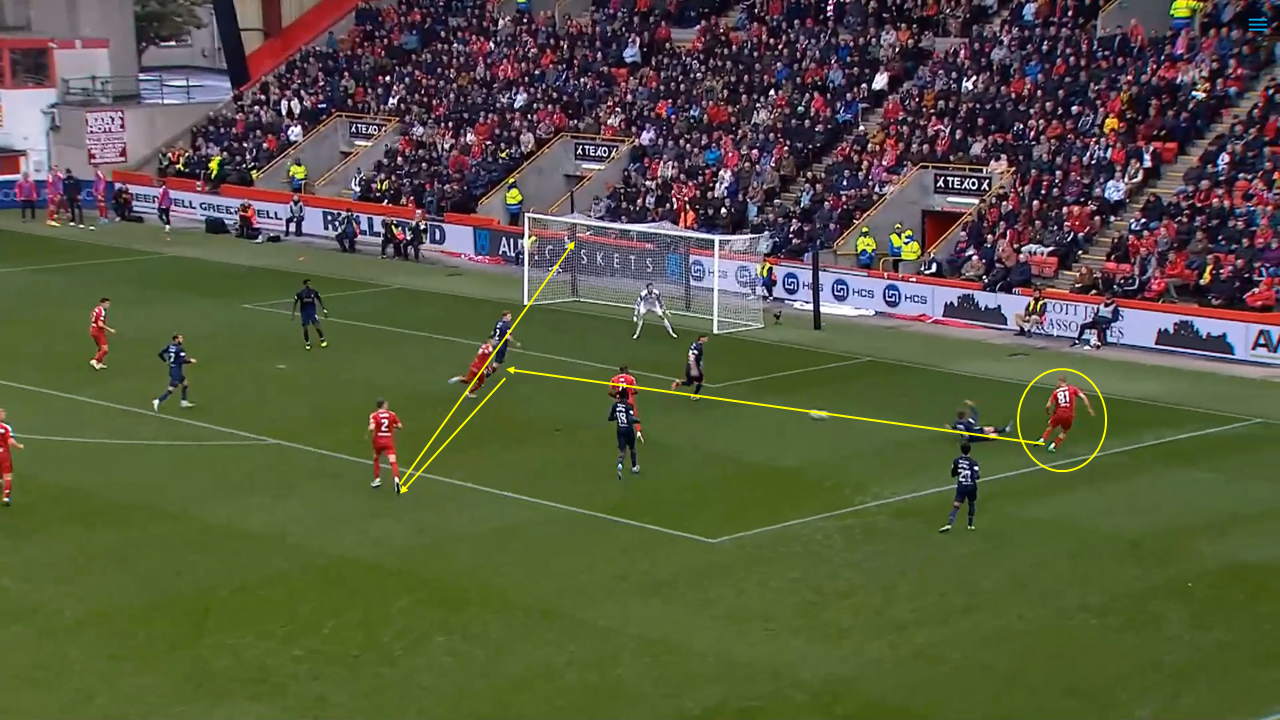
Here, as Finnish winger Keskinen had driven into the box, he cut the ball back for his teammates.
Again, Aberdeen had players attacking the second six-yard box.
None of Aberdeen’s players are quite able to get on the end of the ball, yet a poor clearance from the opposition finds Nicky Devlin, who’s made his way into the penalty box.
He then rifles the ball into the back of the net.
The quality of Aberdeen’s aerial threat also can’t be underestimated as well.
Although the majority of their crossing success comes from cutbacks, they do have the ability to cross the ball from deep.
Aberdeen are aerially dominant because of players like Guèye, Palaversa, and Mitov, who all stand around 6’2″.
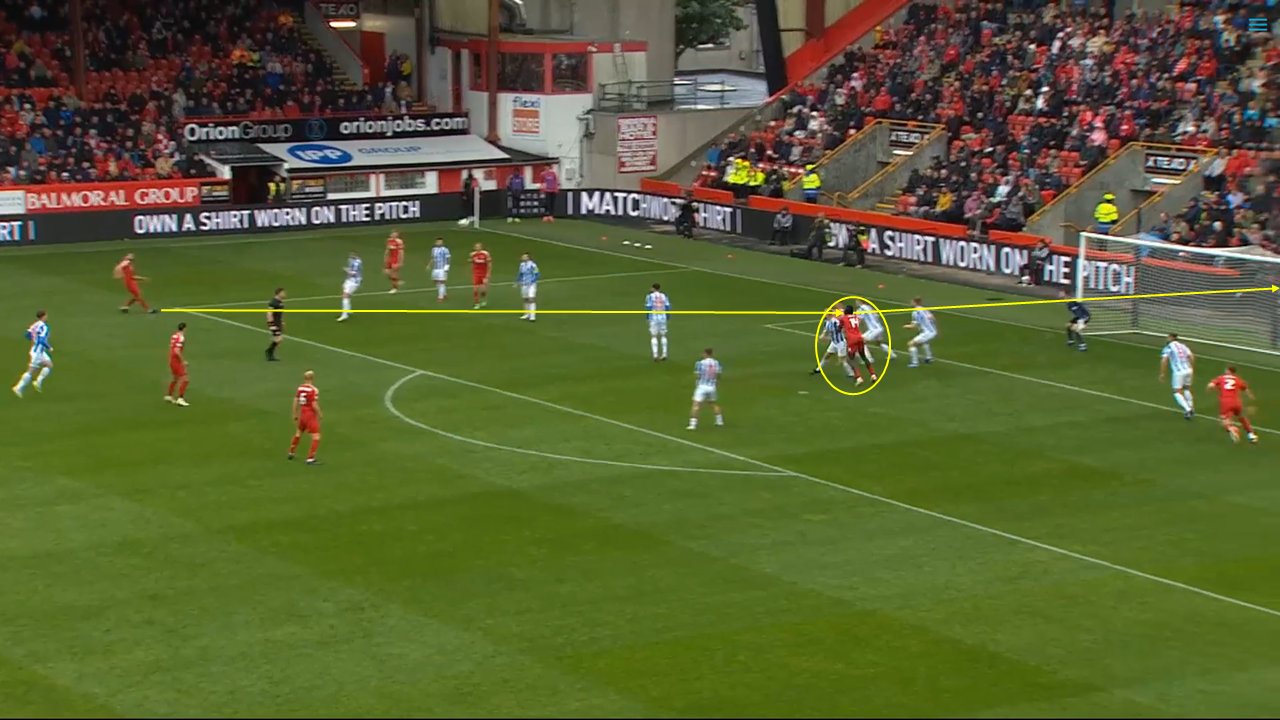
In this situation, the ball is played back to captain Shinnie, who delivers a cross into the area.
Aberdeen have three players waiting in prime positions.
The towering figure of Guèye meets the ball with his head, directing it into the back of the net.
Aberdeen has scored the most headers in the Scottish Premiership this season, highlighting their aerial dominance.
Conclusion
Aberdeen have by no means put the most crosses into the box this season by a Scottish Premiership side.
They’ve put in the 10th-most crosses this season.
Hearts have delivered the most crosses into the box this season and are currently at the bottom of the Scottish Premiership.
The Edinburgh side have also scored the fewest goals, highlighting that simply playing crosses doesn’t equal goals.
Aberdeen have proven that effective crosses come from doing multiple things well.
As our analysis shows, they focus very well on getting into the prime location to cross the ball, cutting the ball back into the second six-yard box, and getting players into the penalty area, particularly the second six-yard box.
We also need players who can convert chances and pounce on opportunities after a ball is delivered into the box.
Aberdeen’s next match is against champions Celtic.
This will be a real test of their title credentials.
If Aberdeen is to succeed, they will surely call upon their incredible ability to create chances from crosses.





Comments